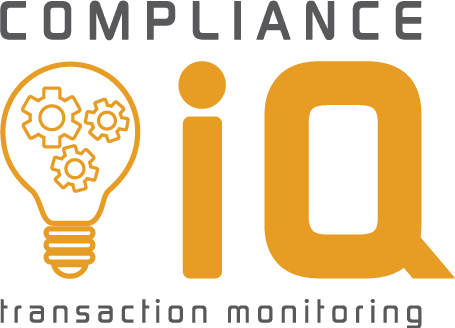
Compliance IQ is our proprietary, customizable transaction monitoring and analyzation tool. With the ability to aggregate, analyze and detect suspicious activity in real time, see how Compliance IQ can mitigate your business’ risk today.
Compliance IQ will aggregate transactions across multiple locations, brands and products.
Compliance IQ will analyze and interpret the information put into it. Flexibility to build in custom business and compliance rulesets that fit your business’ risk threshold.
The transaction monitoring system will incorporate your company’s rules to detect high risk activity such as structuring, smurfing and flipping.
Large amounts of data make it increasingly difficult to use pivot tables effectively. Automating your compliance program and tools will save labor cost and time.
Linking a single customer’s data across multiple platforms can be difficult. Compliance IQ is smart enough to identify similar names and customer data from multiple databases. For instance, if you are using two Point-of-Sale (POS) systems, or one system for check cashing and one system for wire transfers, you will be able to pull that information together and identify if the transactions are coming from the same person. As an example, our system will recognize that John Smith and John A. Smith are the same person if they also have the same phone number and live at the same address.
With the ability to integrate directly to the BSA e-filing system, we save you valuable time when needing to file Currency Transaction Reports (CTRs) and/or Suspicious Activity Reports (SARs).
Compliance IQ will store records of filed and non-filed Currency Transaction Reports (CTRs) and Suspicious Activity Reports (SARs) for future review.
Compliance IQ is available through a batch upload or real-time aggregation. Integrate Compliance IQ directly to front end Point-of-Sale systems more for real-time alerts.
As a part of the independent review process, and ongoing compliance requirements, transaction monitoring is something that is often overlooked by Money Services Businesses (MSBs). The fundamentals of transaction monitoring are implemented systems to identify and protect institutions from transactions that are not compliant with The Bank Secrecy Act (BSA), Anti-Money Laundering (AML) and Office of Foreign Assets Control (OFAC). Transaction monitoring and analysis tools are important for both reviewers and MSBs during the review process, as well as for MSBs to have the ability to monitor activity throughout the year.
Examiners are using more sophisticated tools than ever before, allowing them to identify considerably more suspicious activity than compared to using traditional pivot tables to cross reference data. You, as an MSB, want to make sure you have a quality process capable of aggregating and monitoring activity throughout the year. If you don’t, it will be apparent come review time.
An effective transaction monitoring system should facilitate the prevention, early detection and correction of mistakes and problems before they develop into major problems for the company. Manual monitoring systems can also be affected by the biases of employees, reviewers and auditors who examine transaction records. An automated system, once the parameters are set, allows analysis that is not tainted by the human errors or skewed by prejudices. The results of an automated system are independent of staff capabilities or biases. Once the rules of an automated system are set, employee time is not spent looking for suspicious activities, rather reviewing and confirming transactions that are appropriate to file.
CASE STUDIES OF
Ineffective transaction monitoring leads to fines as seen in major cases and lawsuits. Here are a few cases of financial institutions being fined by FinCEN, OCC and the State of New York for deficiencies in their transaction monitoring systems:
In February 2018, the U.S. Bank National Association of Cincinnati, Ohio, (U.S. Bancorp) was fined a total of $598 million for deficiencies in its AML program which included ” systemic deficiencies in its transaction monitoring systems, which resulted in monitoring gaps…” It had among many deficiencies “outdated systems to conduct appropriate monitoring and due diligence.”
They were fined by FinCEN, OCC and The US Attorney’s Office for the Southern District of New York.
UBS was fined $15 million for AML failures including weaknesses in its automated monitoring system which resulted in failure to adequately monitor wire transfers.
UBS was fined by FinCEN in December 2018.
There was a $40 million fine against Mashreqbank for a host of financial crime compliance deficiencies including inadequate monitoring. They were also asked to conduct a 6-month look back review.
Mashreqbank was fined by the New York State Department of Financial Services (NYS DFS) in October 2018.
In 2015 FinCEN fined a Liquidated Credit Union $500,000 for failure to update its AML program as a result of which it was unable to adequately monitor, detect and report suspicious activity. The fact that the fine came after the credit union was liquidated shows FinCEN takes requirements to maintain an effective AML program seriously.
As a business that conducts or processes financial transactions you should be aggregating and monitoring your activity on an ongoing basis. It is expected by regulators and will be tested by your examiners.
For additional information about transaction monitoring, please feel free to inquire about a demo on Compliance IQ, our proprietary aggregation and analyzation software.
We are here to help, contact us today for a free quote!













